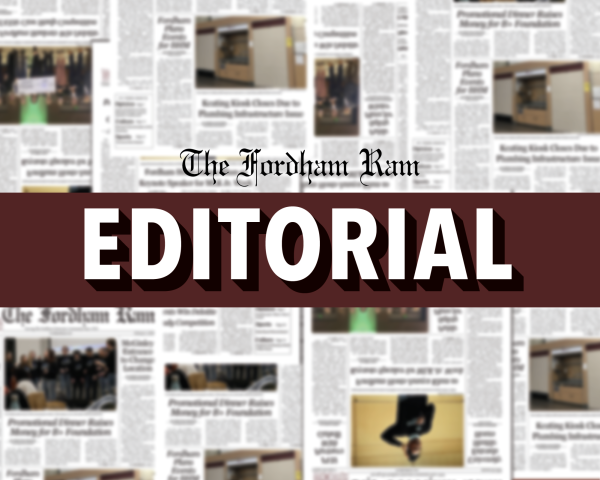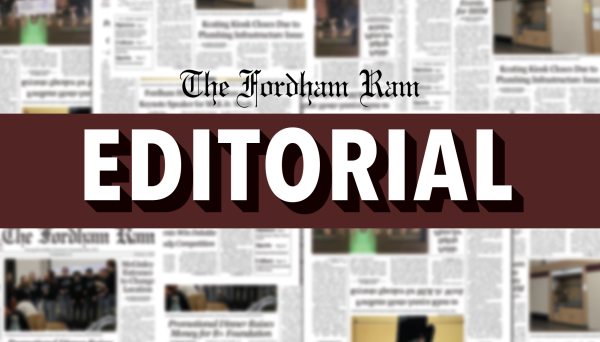Public Transit Neglects the Bronx’s Needs
Every weekend until Monday, Dec. 19, the D-Train service will be suspended between 161st Street-Yankee Stadium and Norwood-205th Street for maintenance, meaning that the train will not be servicing the Fordham Road station, the station used by many Fordham community members.
Students who travel throughout the city with any frequency, especially on weekends, know that the disrupted service is a major inconvenience for anybody who wants to travel downtown or even uptown a few stops. In fact, pausing service between 161st Street and 205th Street knocks out service to over 40 blocks and a majority of the D-train’s Bronx-based line. With the D-Train being one of only two subway lines servicing West Bronx (the other being the 4 Train), this is a major disruption to commuters from the Bronx.
While the service pause only affects weekend outings (and not too catastrophically; advisory signs posted in the Fordham Road station encourage D-Train commuters to transfer to the D from the 4 at Yankee Stadium), it points to a severe flaw in public transportation accessibility for the boroughs outside of Manhattan and especially the Bronx.
The Bronx is a fairly large borough of 42.7 square miles. Why is it that the subway seems to avoid the central areas of the Bronx and only favors the west, south and east borders? The alternative is the Bx Bus system that operates where the subway doesn’t, but the buses are not always reliable and are subjugated to the rules of the road; the rush hour and miscellaneous traffic problems can cause heavy inefficiencies in commutes.
The reliance on buses in neighborhoods where subways aren’t available points to one of the largest problems in the MTA infrastructure. Underserved neighborhoods in the Bronx, Queens and Brooklyn lack accessibility to subway lines that could beneficially connect them to areas with more significant economic opportunities.
There are already a number of plans suggested, including the Trans-Regional Express (T-REX), a regional commuter railway that would connect all boroughs except Staten Island.
As it stands, interborough public transit commutes are centered around Manhattan, meaning that it can take well over an hour to get between Queens and the Bronx via subway when the commute via car would take significantly less time.
A good example of this would be the commute between Fordham’s campus and the nearest major airport, LaGuardia.
Using public transport, getting to Laguardia would take about an hour and a half on the 4 Train and a Manhattan Select Bus Service. However, the same trip by car would take just 28 minutes (on a toll-required route). The bulk of this subway commute is spent traveling through Manhattan from the Bronx to get to a destination in Queens, whereas traveling via car on a highway would lead the traveler directly from the Bronx to Queens.
The solution, it would seem, would be to develop a subway line that connects the Bronx, Queens and Brooklyn (connecting with various lines that already exist in these three boroughs) without a reliance on subway lines in Manhattan.
In 1996, the Regional Plan Association (RPA) proposed what they called the Triboro RX line, a 24-mile long subway line connecting 17 subway lines between the four non-Manhattan boroughs. The Triboro would begin in the Bronx’s Co-op City and end its service in Brooklyn’s Bay Ridge with a possible extension to the northern tip of Staten Island.
According to the RPA, “New York City’s subways were built radially from the core to connect people to Manhattan, limiting the system’s value for residents traveling to other boroughs. Indeed, the vast subway network, with 470 stations, isn’t within a reasonable walking distance for 43% of the city’s outer borough residents. Yet more than 50% of New York’s job growth in the last 15 years has occurred outside Manhattan.”
While funding the development of the Triboro subway may seem like an incredibly expensive venture, its reliance on preexisting rails brings its cost down to cheaper than many other proposed subway lines aimed at connecting its three boroughs. The RPA estimates that the initial costs would range somewhere between $1 and $2 billion dollars.
For a city that spends nearly $11 billion dollars a year on its police department, funding an MTA expansion directly linking three boroughs is a viable possibility.
Plus, it would boost subway ridership by a large amount; RPA analysis suggests that initial ridership estimates would be somewhere around 100,000 daily commuters.
The Triboro RX line is just one of many proposed plans to improve transit for New Yorkers that live outside of Manhattan, especially in underserved neighborhoods. All of these proposals recognize a very systematic issue in subway development, one that favors Manhattan, the borough hub for New York’s many subway lines.
The MTA is currently functioning with a subway system that favors antiquated beliefs about NYC population growth. Current subway lines favor Manhattan as a central location for all New Yorkers, ignoring more modern New Yorker residential and economic migration into the other boroughs. It’s time for the city to update its public transit systems to reflect this.












































































































































































































Bran • Nov 9, 2022 at 8:29 pm
Yes, yes, and more yes! I don’t know how no one’s investigating the MTA shutting down trains throughout Brooklyn, Queens, and the Bronx (while not needing similar train “maintenance” in Manhattan). Somehow, half a century past Brown v Board of Education, we still have those students who aren’t rich and white walking a mile to catch the train to school. Not to mention the garbage accessibility options for elderly and disabled communities. Or the insane MTA spending on cops who hide behind walls and arrest fare evaders. It’s a real travesty.